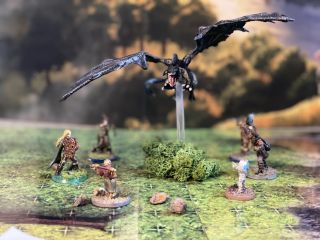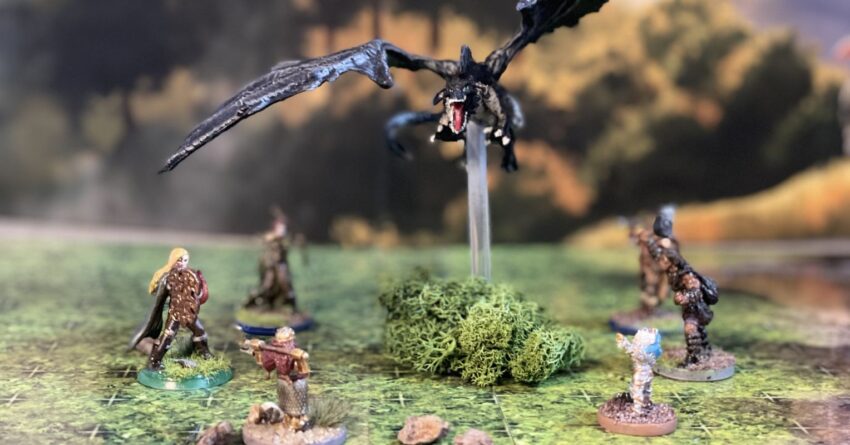As therapists, we try all sorts of techniques to reach our clients. Some techniques are helpful, while others miss the mark. One new technique that is gaining in popularity is using tabletop role-playing games, or TTRPGs, as a medium for therapy.
The use of TTRPGs in therapy is referred to as applied gaming (Connell, 2023). In applied gaming, the game is used much as music is in music therapy or art is in art therapy. It is a vehicle to help teach and practice skills that are not necessarily related to the game itself. Applied gaming allows players to practice and role-play skills that they have learned in therapy in a way that participants seem more open to than in traditional psychoeducational role-playing.
What Are TTRPGs?
Tabletop role-playing games are a subset of role-playing games or RPGs. In an RPG, the player takes on the persona of a character that exists and interacts with the world of the game. RPGs got their start through paper and pencil games such as Dungeons and Dragons and have become a popular style, particularly in video games, with titles such as The Legend of Zelda, The Elder Scrolls, and Boulder’s Gate III. As noted by Hitchens and Drachen (2009), in all role-playing games, there are three important elements: the world of the game, the rules of the game, and the player character in the game.
The World of the Game
The world of the game is a fictional environment that is the setting for a story. This world can be vastly different from the world we inhabit, such as by including magic and fantastical creatures, or it can be rather close to our lived experiences. The world of the game is self-contained and typically feels complete for the players. How the players interact with the world is where the rules of the game come into play.
The Rules of the Game
The rules of the game dictate how the players interact within the gaming world. The rules will include mechanics such as how the players gain skills and abilities, how they can engage with other creatures in the world, and how the world will react and interact with the player’s character. If a player wants to gain skills through research, the rules of the game will note if that can happen and, if so, how much can be gained through this action. Rules can be where players feel the most liberated and the most limited.
The Player Character in the Game
The choices that the player makes for their character in an RPG are how the player interacts with the game itself. The actions of the player will impact the story of the game. In video games, all of the choices that a player makes have to be ones that were programmed into the game, and thus, your choices can be quite limited.
Tabletop RPGs, on the other hand, are played through communal storytelling. While TTRPGs can be played with as few as two players, often there are around five to eight players. One player will act as the narrator for the story; they are often called the game master or GM. The GM typically has the final say on the rules, and will act as the other characters in the world the players will interact with. The other players will each have created a character that they will use to explore and interact with the world.
Each player can state their actions and desires for their character, and the GM will narrate the success or failure of the player’s actions, often utilizing a chance mechanic, such as rolling dice, to help determine the outcomes. Players do not have to worry if what they want to do has not been built into the game already, for the GM can adapt the story to the choices of the players.
The rules of the game will help the GM determine how successful the players can be in any given situation. Players have the autonomy to be creative and innovative in the solutions they employ to solve the problems the game presents them with. This autonomy, the ability to engage in creative problem-solving, is part of why TTRPGs can be such a wonderful tool for therapists.

Miniature figurines are used to help represent what is occurring in a TTRPG session.
Source: Courtesy of Megan Connell
Use of TTRPGs in Therapy
In an applied TTRPG, the therapist often takes on the role of the GM. They will narrate the story and create therapeutic encounters for their clients/players. Therapeutic encounters are specific challenges designed to allow the participants to practice a desired skill or intervention related to their therapeutic goals and objectives. During these encounters, the players will be presented with a problem that can be solved in part by using skills that they have learned, such as assertive communication or cognitive reframing.
As the GM is able to adapt the story as needed, therapeutic encounters can be tailored to each group that plays the game. If an individual or group is working to learn social skills, their characters might find themselves having to gather information at a party. If the group is working on learning conflict resolution, their characters might have to work on helping negotiate peace between warring kingdoms. Applied GMs can even use technology such as biofeedback machines to monitor heart rate and have the group practice grounding techniques when their heart rate becomes elevated.
Something else that seems unique to TTRPGs is how immersive the experience can be (Mello, 2006; Schallegger, 2018). When players of TTRPGs recount the stories of their characters, they do not speak in terms of “my character did this.” They say, “I did this.” This is not a loss of psychological frames; the player knows that they are not standing on a bridge fighting off a troll, but the experience is highly immersive. This might be the result of how much narrative control and autonomy the players have within the game. They might choose not to fight the troll and instead encourage it to unionize with other bridge trolls in the area to collect tolls to use to build a troll school. The tone and result of the narration are highly dependent upon what actions the players choose to take. As an applied GM, my players almost always do something surprising and unexpected, and the amount of growth and development I see in them as a result of having the ability to choose is incredibly powerful.
While there are now hundreds of trained therapists using TTRPGs in therapy, research on the subject is still lacking or in the early stages.
Anecdotally, though, I can say I have seen incredible growth and development from the players who have been at my applied gaming table. For those wishing to learn more about playing or using TTRPGs, I would humbly recommend my book, Tabletop Role-Playing Therapy: The Guide for the Clinician Game Master, from Norton Press. At the very least, I hope that you go out and perhaps try rolling dice and telling a story with your friends.
